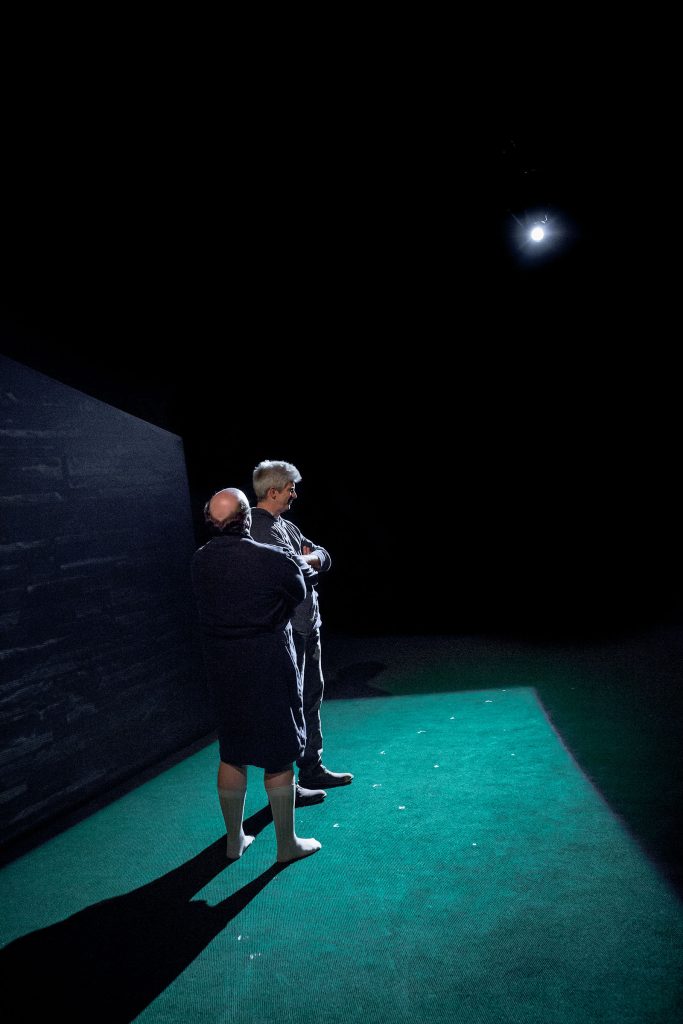What is the value of understanding the context within which a play was written or conceived?
The Mystery of Irma Vep: A Penny Dreadful written by Charles Ludlam in 1984 is a creation of its time and place. The beauty of the ridiculous action is that it withstands the test of time for both its entertainment value and its relevancy.
“Irma Vep, relevant?” you ask. “Well, yes,” I say. “A social comment” in the ridiculous and melodramatic action celebrated for years for making people laugh. Understanding New York City and the audience of Ludlam’s Ridiculous Theatre Company makes the comments and relevance clearer.
When I began this project I assumed camp, cross-dressing, and the trappings of the Ridiculous Theatre Company were one place in which Ludlam and his life partner, Everett Quinton, could freely be themselves. It is a tenant of camp and drag that one is given the opportunity to be more of one’s self away from the roles forced on people by social norms and mores. It is my experience that the ferocious energy necessary to sustain the style of any play leaves the participant raw and exposed. Camp requires heightened energy and extreme commitment. I naively thought Ludlam simply found a world in which he could be himself.
The truth is that in the 1970s when the Ridiculous Theatre Company was making a name for itself, it was illegal to cross-dress in public. Ellen Stewart, who ran La Mamma and championed Ludlam’s company, would stand on the sidewalk of East Fourth Street during productions to keep an eye out for the police. And so just the creation of the play itself was a subversive act and hence a social comment.
Ludlam wrote, “Take things very seriously, especially focusing on those things held in low esteem by society and revealing them, giving them new meaning, new worth, by changing their context.”
With Irma Vep he gives new meaning to the performance style of camp. He also does this for the literary form the Penny Dreadful, which was a 19th-century serial similar to the work that Charles Dickens was doing. A Dickens serial would cost a shilling, but a Penny Dreadful would cost simply a penny. The market for such works was working-class adolescent boys; a group who had very little money but enough to pay for some type of entertainment. Hence the Penny Dreadfuls were stories about vampires, werewolves, mummies, and rich and exotic places—entertainments held in low esteem by society and high culture.
By the time Luldlam wrote The Mystery of Irma Vep in 1984 the AIDS Epidemic had hit in full force. There existed in the gay community an unknown horror that was sucking the life out of its community members. People were dying gothic and horrific deaths. Ludlam chose a particular style (the Penny Dreadful that was held in low-esteem) in order to tell a story about unexplainable, sudden, and horrific deaths. And within this structure, he explored death and fear and hope and companionship and love—and he gave the form new meaning and relevance.
BY 1984, Ludlam had been working in his unique and entertaining style for years, cultivating an audience and delivering entertainment that was driven by his personal life. The Mystery of Irma Vep was written for him and his life partner Quinton to perform. Their intimate relationship in the face of the AIDS epidemic (where so many people lost friends, family, and loved ones) is one layer in the fantastic quick-changes of characters that makes up the story.
The sad truth is that Charles died in 1989 from complications related to AIDS. Decades before he and the love of his life, Everett, could be married and face the future and the unknown together in a public embrace. Today that basic human right is now given to many people and the fears and frightening moments that life may reveal are now shared intimately and openly regardless of sexual orientation.
